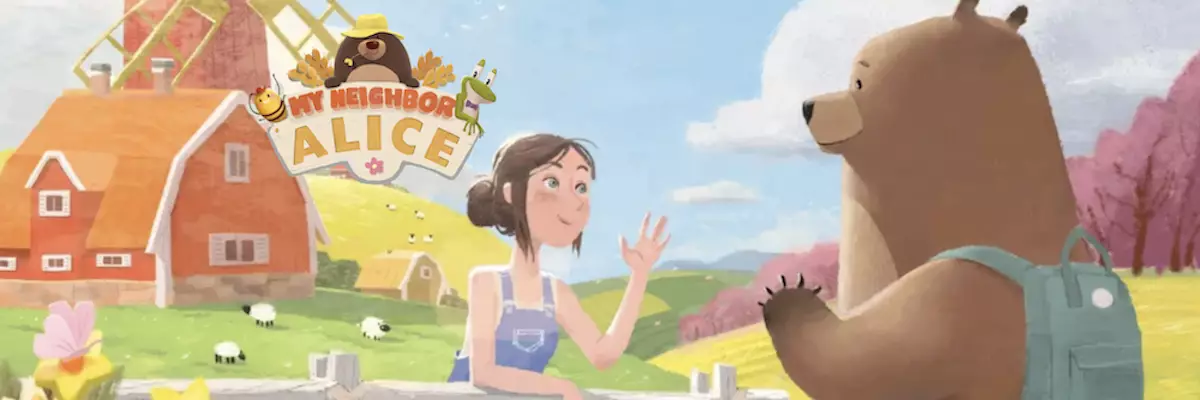Launched in 2021, **My Neighbor Alice** has quickly established itself as a formidable presence in the blockchain gaming sector. Its innovative design and unique gameplay mechanics captivated players and critics alike, culminating in its recognition as Binance Launchpool’s Project of the Year. This success underscores the potential of blockchain technology to redefine not just how we play games, but also the very economic structures that underpin them.
At its core, My Neighbor Alice combines elements of social simulation with world-building mechanics, reminiscent of popular games like Nintendo’s *Animal Crossing*. Players are invited into the colorful realm of Lummelunda, where they can engage in a myriad of activities: from purchasing and customizing digital plots of land to participating in community events. The aesthetic appeal, characterized by vibrant and cartoonish graphics, broadens its demographic reach—catering to both veteran gamers and casual players.
While the visual allure is undeniable, the mechanics of My Neighbor Alice set it apart in the crowded landscape of play-to-earn (P2E) games. Players not only engage with the gaming environment but also partake in an economy where their actions—such as planting trees or building structures—translate into real rewards and community interaction. This innovative blend of social interaction and economic strategy positions My Neighbor Alice as a unique offering in the blockchain gaming arena.
The game’s foundation is built on **Chromia**, a blockchain developed by ChromaWay that promises scalability and user-friendliness. Following its mainnet launch in July 2023, My Neighbor Alice has set the stage for further advancements, particularly with the anticipated release of user-generated content (UGC) tools. This significant feature will empower players to harness their creativity without needing coding expertise, thus enhancing engagement and personalization within the game.
Moreover, the integration of dual tokens—$ALICE as the primary currency and the recently introduced $BJORN—reinforces the game’s intricate economic structure. $ALICE serves as a medium of exchange and a governance token, allowing players to have a voice in the game’s development. Meanwhile, $BJORN, which users can earn through land quests and building endeavors, allows for greater player interaction and deeper engagement in the game’s ecosystem.
A pivotal element of My Neighbor Alice’s design is its use of **non-fungible tokens (NFTs)**. Every in-game item—ranging from decorative plants to digitally crafted animals—is tokenized, ensuring that players maintain true ownership of their digital assets. This ownership extends beyond mere possession; players can trade, buy, or sell their NFTs in an integrated marketplace, enhancing both the economic and creative potential within the game.
Additionally, the game fosters a sense of community through its reputation system, which rewards players for positive contributions while actively discouraging malicious behavior. Such mechanisms not only create a friendly gaming atmosphere but also attract players who value a cooperative experience. The inclusion of a real-time translation feature further breaks down barriers, allowing global players to interact seamlessly—even if they speak different languages.
My Neighbor Alice’s ambitions extend beyond the niche web3 gaming community. Collaborations with well-established brands, such as the fashion magazine ELLE, indicate a strategic effort to appeal to traditional gamers and non-gamers alike. Such partnerships are vital for bridging the gap between the conventional gaming world and the burgeoning blockchain landscape, inviting a diverse audience to explore the immersive world of Lummelunda.
Despite attracting both new and seasoned players, the requirement to purchase land for full participation could deter some curious newcomers. However, the developers wisely offer a free trial period, allowing players to explore the game without financial commitment. This strategy not only attracts a wider audience but also encourages players to consider full engagement once they experience the charm and depth of the game.
With its vibrant graphics, player-driven economy, and community-centric design, My Neighbor Alice proves to be more than just a playful romp through a digital landscape; it positions itself as a transformative player in the gaming industry. Its ability to blend traditional gaming elements with innovative blockchain features provides a model worth emulating by future titles. As the P2E model evolves, My Neighbor Alice stands as a testament to the possibilities of digital gaming—a charming universe just waiting to be explored.
Whether you are a blockchain enthusiast or a casual gamer looking for a new adventure, My Neighbor Alice invites you to step into its enchanting world and discover the future of gaming for yourself.


Leave a Reply